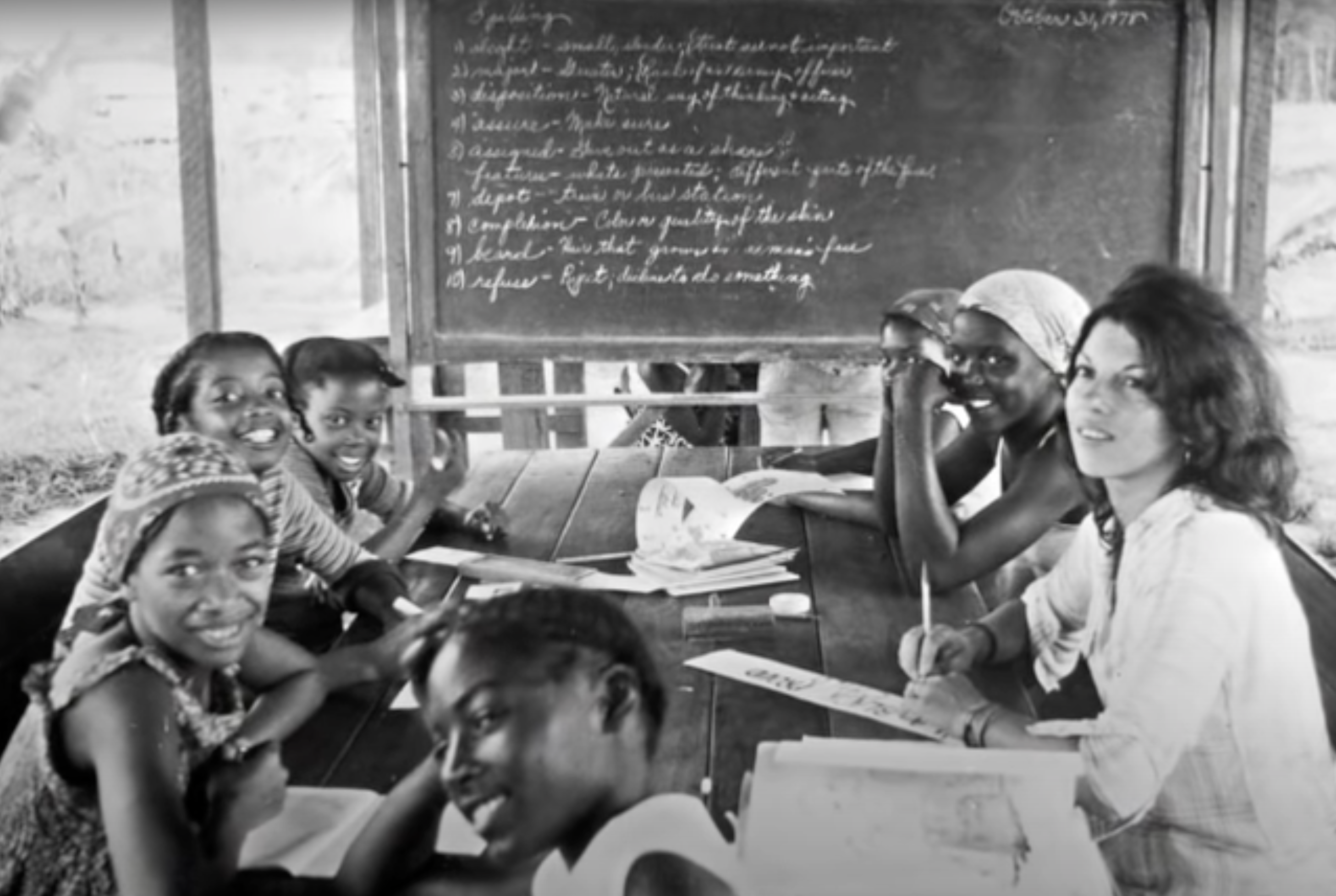(Edward Cromarty is a regular contributor to the jonestown report. His complete collection of articles is here. He can be reached at edwardcromarty@hotmail.com.)
 In the course of my writing over the years about the education programs employed in Jonestown, my primary focus has been on the progressive, culturally responsive, and vocationally-based practices employed in the Jonestown school, of which there is ample evidence. However, there were negative influences which impacted the Jonestown school and to a larger extent all the community’s education programs, including the political interference of the Guyanese government – specifically, the Ministry of Education – with the administration of the Jonestown school, and Peoples Temple’s use of the school for publicity purposes.
In the course of my writing over the years about the education programs employed in Jonestown, my primary focus has been on the progressive, culturally responsive, and vocationally-based practices employed in the Jonestown school, of which there is ample evidence. However, there were negative influences which impacted the Jonestown school and to a larger extent all the community’s education programs, including the political interference of the Guyanese government – specifically, the Ministry of Education – with the administration of the Jonestown school, and Peoples Temple’s use of the school for publicity purposes.
After months of pressure exerted by Peoples Temple, the Guyana government accredited the Jonestown school in eastly summer 1978 (Guyana Chronicle, 19 June 1978). The problem was that Guyanese law did not permit private schools, thus permission given for the Jonestown school to operate created a double standard that could be used to further the isolation of Jonestown (de Planta, 2018). Extracted from the letters of Jim Jones (trans. McGehee, 2024), we learn that there had been earlier pressure from the Guyana government for the residents of Jonestown to send their children to the government school in Port Kaituma, including the demand that the Jonestown children attend the school on a live-in basis. Jones had objected to this demand, as the Temple claimed it had been promised that Jonestown could establish its own schools for residents to attend. Jones in turn suggested that Guyanese children be permitted to attend the Jonestown school, on the basis of the highly qualified teachers and school administrators in Jonestown, and moreover, that the Jonestown teachers be allowed to teach in the government schools in Port Kaituma. In a letter to the Ministry of Education, referencing the Peoples Temple School Curriculum Report, Jones offered to provide specialist teachers and make teachers available after hours in Port Kaituma, and to allow Guyanese students to study in Jonestown (trans. McGehee, 2024).
The Temple also objected to the white colonialist bias of Guyanese education of the time, a concern which was mirrored by progressive educators within the Guyanese education system aligned with the socialist PPP. Questioned about the interplay of religion and socialism in the Temple, Jones replied that religion was not taught in the Jonestown school, it was the socialism of Karl Marx (trans. McGehee, 2024, BB-17-ii-4). Its socialist principles inclusive of its teachings of Guyanese culture and history were echoed when the existence of the Jonestown school within the Guyanese political system was questioned.
The poor conditions of the Guyanese schools of the time were a valid reason for not wanting the children of Jonestown to attend the government schools in Port Kaituma. Guyanese schools had substandard facilities, poor medical conditions, inability to feed the children, politicization, lack of educational materials, had low attendance and discipline, and poorly trained educators. The education system of Guyana did not offer equitable services for rural and Amerindian students, and was plagued by the biases of the white Christian schools which dominated education in the colonial era and which were favored by the conservative PNC (Cromarty, 2020).
In comparison to the letters of Jim Jones, which provide the political administrative perspective of education in Jonestown, the Edith Roller Journals (trans Beck, 1978) give the more human student-teacher experiential perspective of the residents who taught and studied in the school. It described the mandatory curriculums, health studies, teacher meetings and classes, and actions to prevent closure of the school, such as the collection of all teachers resumés and credentials to be presented to the Guyanese Ministry of Education. In her Journal, Edith Roller spoke of the preparations made to demonstrate the quality of the Jonestown school to Guyanese officials who came to visit and decide if the Jonestown school should be permitted or closed. She even mentioned the possibility of the Jonestown Community High School taking over the facilities of the government school in Port Kaituma.
The politicization of the Jonestown school provided Jim Jones with propaganda opportunities with which he could approach Guyanese government officials in the Ministries of Education, Agriculture, and Medicine about the need for the services and expertise offered to local Guyanese populations by Jonestown. It provided Jones with a tool to integrate Jonestown into local communities, sell the commune to Peoples Temple members and non-members in the United States, give the residents of Jonestown purpose, and offer Jones emotional leverage over Jonestown residents by demonizing the “Nazi-inspired” outside world which in his mind threatened the Jonestown community. To diverge further into how the education programs of Jonestown were utilized in the press will require a future article, one that promises to be of interest.
Works Cited
Cromarty, E. (2020). Indigenous Materials and Learning in the Education Programs of Jonestown. Alternative Considerations of Jonestown and Peoples Temple.
de Planta, J. (2018/2023). Which group or individual outside Peoples Temple had the most significant impact on Jim Jones’ decision to order the Jonestown Massacre? Alternative Considerations.
Edith Roller Journals: March 1978. (2013). [trans. D. Beck]. Alternative Considerations.
Jones letters to Guyana government officials. (2024). [trans. F. McGehee]. Alternative Considerations.
Peoples Temple Gets Official Status. (19 June 1978). Guyana Chronicle. Accessed 30 November 2017.